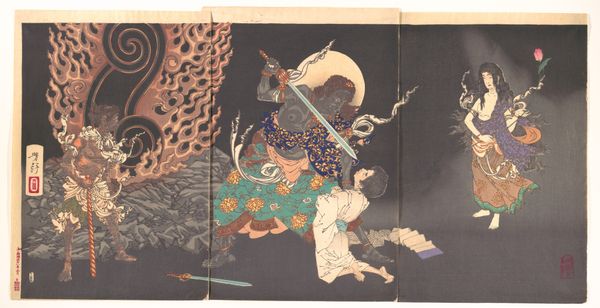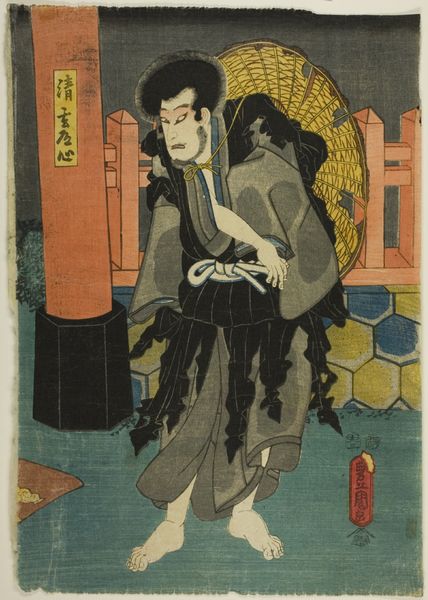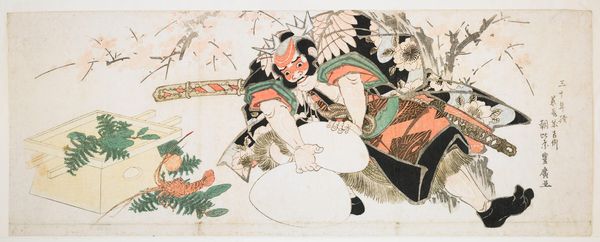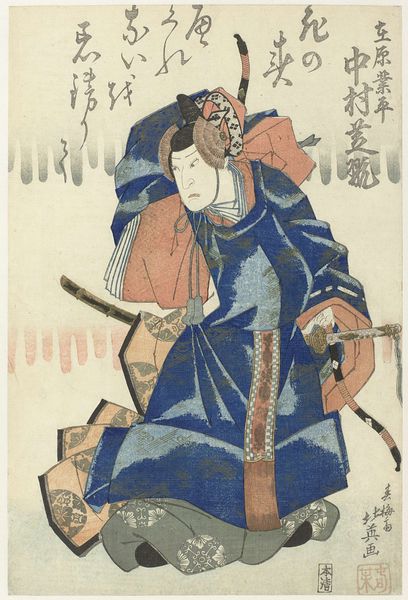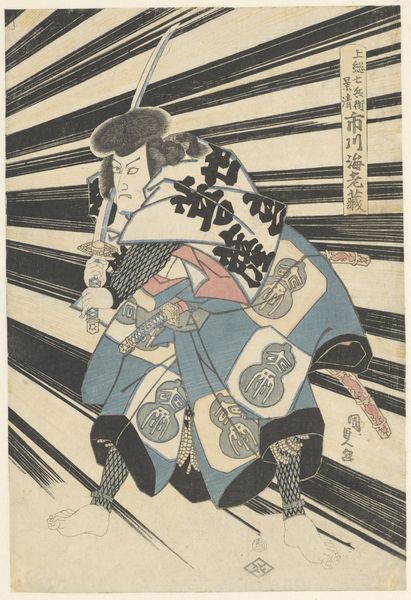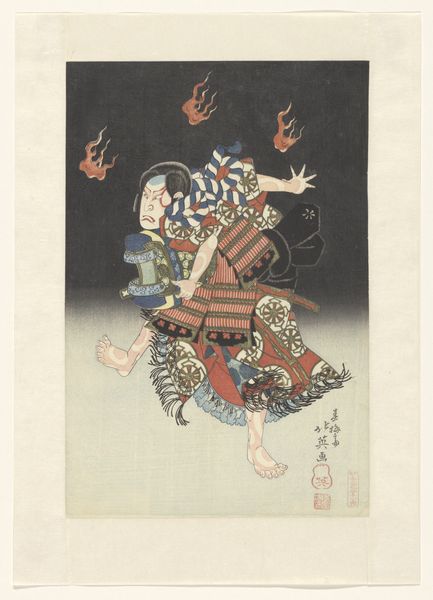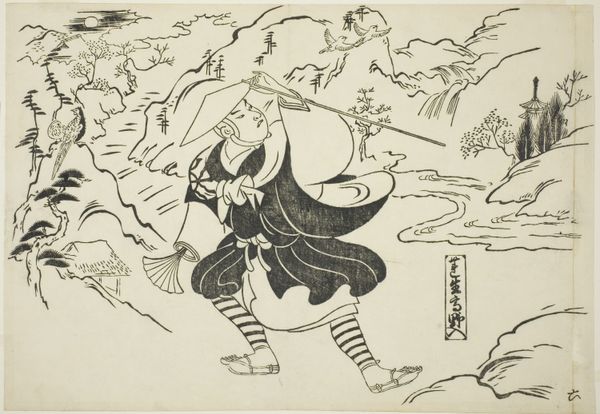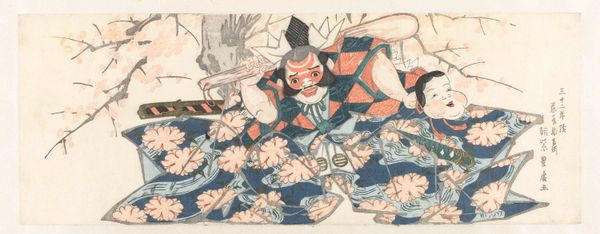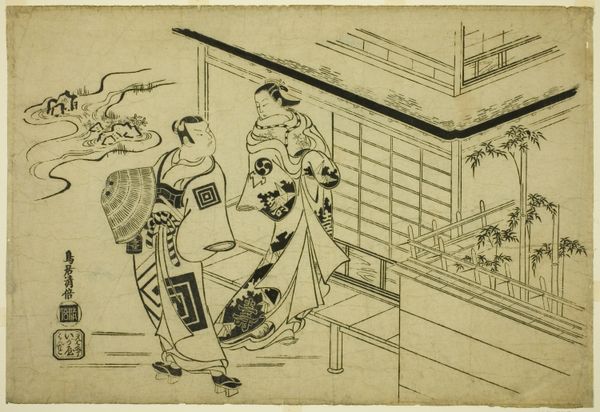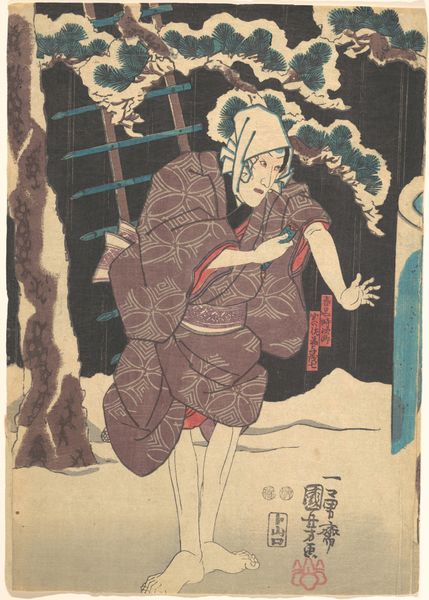
Tokimune (Soga Goro) Sneaking into Yoritomo's Residence (Tokimune Kamakura-dono no kariya o sawagasu) 1891
0:00
0:00
Copyright: Public Domain
Editor: This woodblock print from 1891, by Migita Toshihide, depicts a scene titled "Tokimune (Soga Goro) Sneaking into Yoritomo's Residence." I'm struck by how much detailed work goes into such a relatively small print. What are your thoughts on the artistic process at play here? Curator: The process reveals a deeply rooted social framework of production. Consider the physical labor, the craft. From the tree's transformation into woodblocks to the meticulous carving and inking, and then the printing, a whole lineage of workers' expertise culminates here. Even the types of pigments used are linked to systems of trade and availability, influencing the final coloration and form. Editor: So you're saying that the materials and process dictate, in a way, the final appearance of the artwork? Curator: Absolutely. Look at the lines. Their character arises not just from artistic intention, but the tools available, the wood's grain, the cutter's skill. What appears as an individual’s vision is the result of numerous actions within a well-established method of production and distribution aimed at a mass audience hungry for images of the heroic past and present. This collapses traditional art/craft divides. Editor: I see. And these woodblock prints, as a form of reproducible media, would have been consumed widely? Curator: Precisely. And consider the social messaging inherent in its design; these popular forms helped disseminate narratives, ideals, and political viewpoints. Understanding the technical process unlocks our awareness to the underlying values. This informs not only the image itself, but also its cultural role at the time. Editor: I never thought of it that way, but it makes perfect sense. The way it's produced shaped its meaning. Curator: Exactly. Material realities always shape cultural narratives. Reflecting on that allows us to consider our current methods of creating art, today, and their underlying social consequences.
Comments
No comments
Be the first to comment and join the conversation on the ultimate creative platform.

